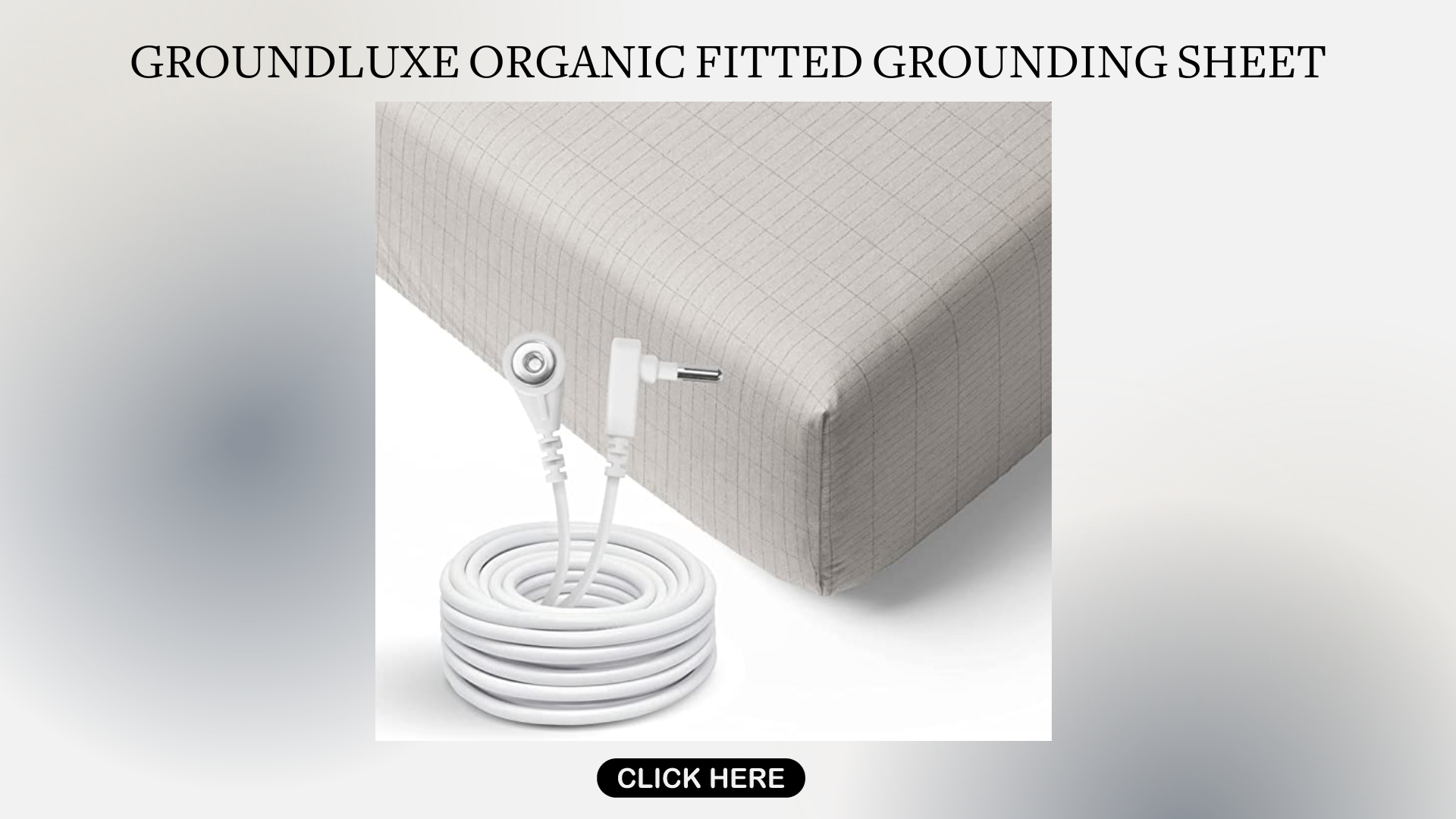Have you ever pondered the reason behind some individuals' perpetual happiness every season? One answer lies in their active engagement with the natural world and the Earth beneath their feet, even when faced with the chilly winds of winter or the crisp leaves of fall.
As we approach colder days, rather than confining ourselves indoors, let us embark on a transformative journey to connect with nature and uncover its profound harmony. Amidst the brisk breezes and fallen leaves, let nature sculpt encounters that were once only imaginable in the realm of poetry.
This is a unique opportunity to infuse your life with a profound sense of peace. So, wrap yourself in your favorite scarf and slip on those weatherproof boots; we are about to embark on an immersive exploration of Earthing in Fall and Winter!
Only join us if you are ready to embrace the wellness benefits bestowed upon us by this age-old practice.
Even during fall and winter, you can actively partake in earthing by employing your creativity and ingenuity. Wearing earthing footwear with copper plates or natural leather soles, and touching snow with bare hands and feet are just a few ways to ground yourself. Finding ways to get closer to the Earth indoors during the colder months will help expand your well-being and improve overall health.

Understanding Earthing
Earthing, also known as grounding, occurs when we actively establish an electrical connection with the Earth's surface. Our bodies, composed primarily of water and conductive minerals, allow us to absorb the earth's free electrons when we come into direct contact with them. These negatively charged electrons can help reduce inflammation and stress within our bodies.
The Earthing Institute explains that earthing can also help reduce our exposure to electromagnetic radiation (EMR) by neutralizing the positive ions emitted by cell phone towers and electromagnetic fields generated by electronics in our homes. Symptoms associated with EMR exposure, such as headaches, fatigue, anxiety, and irritability, can be alleviated through earthing.
Numerous individuals have reported feeling more connected to nature and experiencing fewer emotional outbursts after incorporating regular earthing practices into their everyday lives. Anecdotal accounts shared online include a woman with Chronic Fatigue Syndrome who sought a natural solution to improve her sleep quality, given the side effects of her medication. She began using an Earthing mat while sleeping and noticed significant improvements in her sleep patterns and overall well-being.
Earthing has also been the subject of scientific studies conducted in various clinical settings, demonstrating promising results ranging from inflammation to stress reduction. A recent study published in the National Library of Medicine found that participants who did grounding showed a significant decrease in blood viscosity or "thickness." Thick blood can cause cardiovascular issues such as thrombosis or stroke (1).
A 2004 study published in the ESD Journal suggests that Earthing holds promise for preventive and therapeutic purposes, highlighting its potential to enhance the healing process and mitigate the severity of autoimmune diseases (2).
Given the remarkable benefits associated with Earthing, it is worth exploring its advantages, specifically during the fall and winter seasons when people tend to spend less time outdoors.

Advantages of Earthing in Fall and Winter
During the fall and winter months, individuals may find it challenging to connect with nature and reap the benefits of earthing due to shorter daylight hours and colder temperatures. However, even with snow on the ground or freezing temperatures, earthing remains possible and essential. Here are several reasons why:
1. Enhanced Sleep Quality and Energy Levels
Many individuals have experienced improved sleep quality and increased energy levels through earthing. Multiple studies have demonstrated that earthing helps individuals fall asleep faster and enhances overall sleep quality. This, in turn, leads to higher energy levels during the day.
While some concerns have been raised about sleeping grounded in the presence of other electrical devices, taking appropriate precautions, such as keeping electronic devices away from the bed or using separate grounding circuits, can ensure a safe and uninterrupted sleep while reaping the benefits of earthing.

2. Improved Physical Well-being
Earthing offers proven benefits for physical well-being, even during colder seasons. Research demonstrates that earthing decreases cortisol levels over time. High cortisol levels are associated with stress-related health issues, including heart disease, weakened immune function, diabetes, and cognitive decline (3).
In a 2015 study, researchers found that earthing improved circulation. Participants who sat in a comfortable recliner chair equipped with a grounding mat, pillow, and patches for just one hour experienced a significant improvement in autonomic nervous system control of body fluids and peripheral blood flow. This improvement may enhance blood circulation in the torso and face, promote facial tissue repair, improve skin health and vitality, and optimize facial appearance (4).
Testimonials from individuals with conditions like Raynaud's syndrome further support the positive effects of earthing. By using an earthing mat while sitting at a desk, these individuals reported improved blood flow, increased concentration, and reduced discomfort.
Given the numerous advantages of earthing, it is worthwhile to explore and incorporate this practice into fall and winter routines. Whether practicing indoors or outdoors, there are various ways to stay connected with nature and enjoy the benefits of earthing, even during colder seasons.
Methods to Practice Earthing during Chilly Seasons
To maintain an active voice and eliminate redundancies, the following are revised versions of the provided content:
1. Walk in Nature: Ground yourself by walking in the park or hiking through the woods, even in chilly weather. Remember to dress warmly and connect your bare feet or hands directly with the earth.

2. Try Indoor Earthing: When the weather is harsh, practice grounding indoors on conductive surfaces like concrete, tile, or laminate floors. Utilize grounding mats specifically designed for indoor use.

3. Enjoy Tea Time Outdoors: Sip herbal tea outdoors while sitting on a grassy patch or placing your bare feet on the soil, sand, dirt, or snow.
4. Practice Yoga Poses: Incorporate grounding yoga postures such as cat-cow poses, seated forward folds, Padmasana, and lotus poses into your indoor routine to release tension and promote positive energy flow.
Earthing Products
Earthing accessories help boost your outdoor or indoor grounding experience, especially during chilly seasons. With these simple tools, you can ground yourself effortlessly and improve your physical and mental well-being. Here are some best earthing products worth considering:
1. Grounding Mats: Use grounding mats designed by the Earthing Institute indoors or outdoors to receive a continuous supply of electrons from the Earth.
2. Earthing Shoes: Explore the Fall line of earthing shoes from the Earthing Store, which feature copper plates or natural leather soles for optimal electron transfer between the ground and your feet.
3. Body Bands: Utilize body bands, specially designed for earthing, to stay grounded while sleeping or working. These bands connect non-invasive conductive fibers with your skin's moisture.
4. Grounding EMF Protection Blankets: Consider using grounding EMF protection blankets to block harmful electromagnetic radiation emitted by devices and simultaneously ground yourself into the earth's electrons.

Outdoor Earthing Techniques
Grounding enthusiasts often face challenges during the fall and winter seasons, but numerous outdoor earthing techniques are available to maintain a connection with the earth, even in colder weather. Activities such as hiking, gardening, snowshoeing, or simply sitting on the ground can help individuals stay connected to nature.
Exposing ourselves to the natural elements is crucial for our physical and mental well-being during these times. Not only does grounding or earthing reduce inflammation and alleviate stress, but it also improves the quality of sleep.
Snowshoeing is an excellent method to include outdoor earthing in your everyday activities. It entails attaching a pair of "shoes" to your snow boots, which enhances traction and distributes your weight over a larger area of snow.
While snowshoeing, make sure to take periodic breaks, remove your gloves or mittens, and directly touch the snow surface with your bare palms while taking deep breaths. This direct contact between your skin and the snow will enable your body to absorb the energy of the earth.
What makes grounding with snow even more fascinating is the unique electric environment it creates. Electricity flows between the negatively charged earth and the positively charged atmosphere above, held by the frozen water crystals in the snow. This creates a flow of negative ions for nearby individuals until they come into direct contact with it.
Despite the challenges posed by winter, you can still connect with nature without venturing outdoors. Indoor earthing practices have become increasingly popular, especially among individuals residing in extremely cold regions. By utilizing an indoor earthing mat or grounding bed sheets, you can replicate the experience of outdoor earthing activities while enjoying the cozy comfort of your warm home.
Indoor earthing mats function like indoor footwear, allowing you to absorb the natural electrons that flow when walking barefoot on the ground. Placing the mat under your feet creates an electric environment similar to being outdoors, even though you are physically inside.

Indulging in Nature during Fall and Winter
Engaging with nature during fall and winter is essential to uplift our spirits and combat the effects of shorter daylight. These chilly seasons offer breathtaking beauty and a range of activities, including skiing, snowshoeing, birdwatching, and hunting for autumn leaves. By immersing ourselves in nature, we can break free from screens, breathe fresh air, and reduce stress and anxiety.
One way to indulge in nature during fall is by walking through the forest. Witnessing the vibrant transformation of leaves into yellow, red, and brown hues before they gracefully fall to the ground is a captivating sight. Stepping on the crunchy foliage and walking on the path carpeted with autumn leaves enhances the grounding experience.
Research indicates that spending time amidst trees exposes us to abundant negative ions, which helps balance serotonin levels in the body. Serotonin plays a crucial role in improving moods and reducing anxiety.
Although indulging in nature may be challenging for those residing in densely populated urban areas without nearby forests or parks, indoor plants offer a solution. Indoor plants improve air quality by providing oxygen and also creating a calming effect on their surroundings. They offer a sense of connection to nature, especially for individuals confined indoors or during lockdowns.
Indoor plants act as natural air purifiers, contributing to improved emotional well-being and a sense of natural connection, regardless of the limitations of the indoor environment.
Earthing provides several benefits, including reduced inflammation, stress reduction, improved sleep, and increased energy levels. By following the tips above, you can enjoy these benefits throughout the year, even during fall and winter. Remember, each one of us possesses the power to enhance our physical, mental, and emotional well-being by cultivating a deeper connection with the earth, irrespective of our surroundings.
References:
1. Sinatra, Stephen T, et al. “Grounding - the Universal Anti-Inflammatory Remedy.” Biomedical Journal, Feb. 2023, www.ncbi.nlm.nih.gov/pmc/articles/PMC10105021/.
2. R;, Oschman JL;Chevalier G;Brown. “The Effects of Grounding (Earthing) on Inflammation, the Immune Response, Wound Healing, and Prevention and Treatment of Chronic Inflammatory and Autoimmune Diseases.” Journal of Inflammation Research, pubmed.ncbi.nlm.nih.gov/25848315/. Accessed 25 June 2023.
3. “The Grounded Brain: How Sleeping Grounded Affects Memory and Perceptions - Full Text View.” ClinicalTrials.Gov, classic.clinicaltrials.gov/ct2/show/NCT05050812. Accessed 25 June 2023.
4. Chevalier, Gaétan, Gregory Melvin, et al. “One-Hour Contact with the Earth’s Surface (Grounding) Improves Inflammation and Blood Flow-a Randomized, Double-Blind, Pilot Study.” Health, 3 Aug. 2015, www.scirp.org/journal/paperinformation.aspx?paperid=58836.
About the Author


